History of Génolhac |
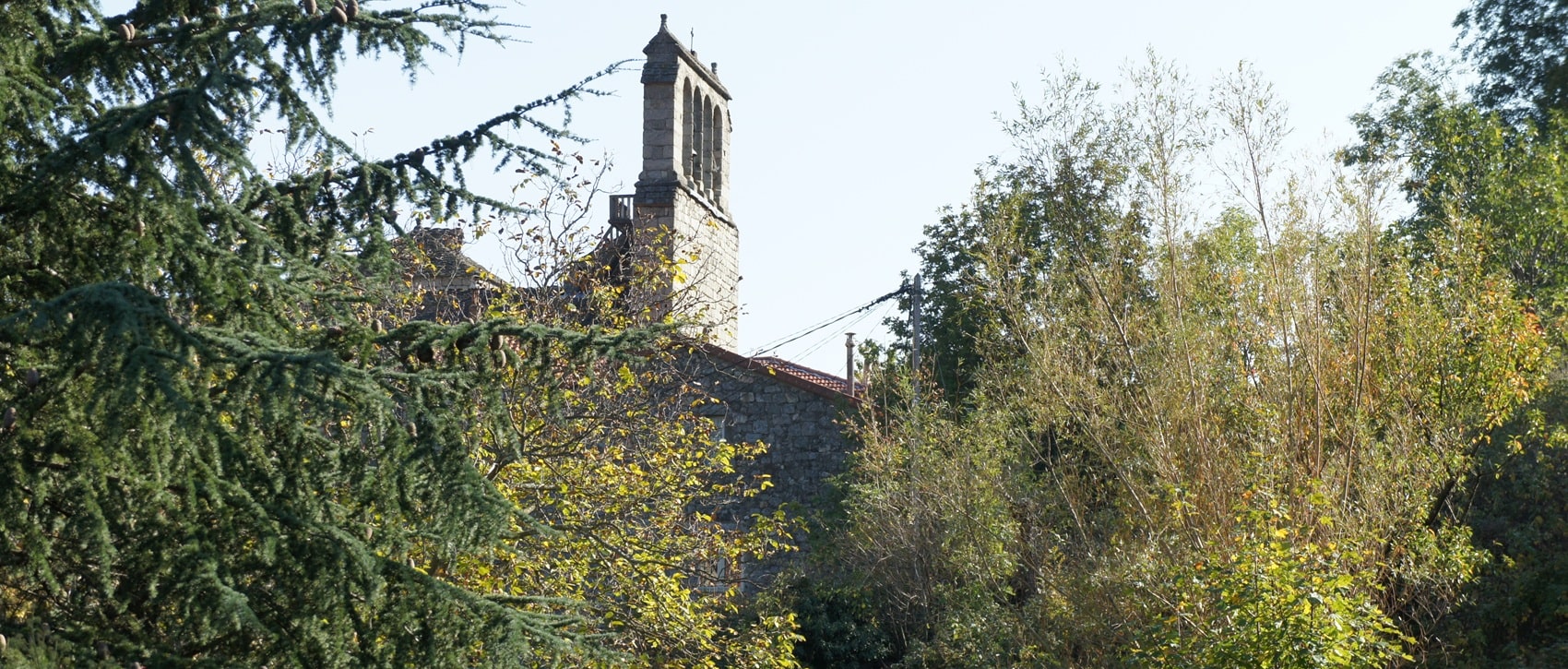
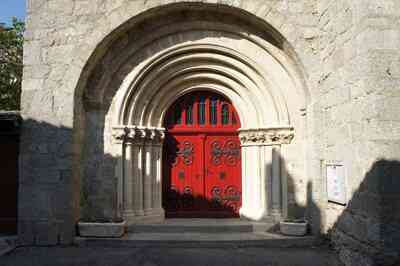 The etymology of Génolhac is highly contested: land of broom (in Celtic, "gen"), origin of waters, from "aqua"... water (this is the most accepted one) or land of Genulius.
Génolhac, during antiquity, was on the trail of tin, an indispensable metal for the manufacture of bronze. This tin came from the Cassiterides Islands (the Sorling Isles in southwestern Great Britain) in British Cornwall. It was likely on the trail of the Phoenicians, the Phocaeans, and the Romans. This trail would become the Régordane path (GR®700) that crossed Génolhac and connected the Roman Province to Auvergne (Némausus-Gergovie).
The etymology of Génolhac is highly contested: land of broom (in Celtic, "gen"), origin of waters, from "aqua"... water (this is the most accepted one) or land of Genulius.
Génolhac, during antiquity, was on the trail of tin, an indispensable metal for the manufacture of bronze. This tin came from the Cassiterides Islands (the Sorling Isles in southwestern Great Britain) in British Cornwall. It was likely on the trail of the Phoenicians, the Phocaeans, and the Romans. This trail would become the Régordane path (GR®700) that crossed Génolhac and connected the Roman Province to Auvergne (Némausus-Gergovie).
The same uncertainty reigns over the etymology of Régordane (Gordian path? the path that gathers the Gards, the gourds? or the path of the ravines?) It was probably the path followed by Caesar to attack the Arvernes (cf. "The Gallic War" by Julius Caesar). It is the pursuit of the Saracens by Charles Martel and his successors. We know that the Cévennes resisted the Arab invasion better than the plain. It is also a possible resurgence of the Cèze and Gardons by the Normans. The feudal system took hold in Génolhac and in the Cévennes like everywhere in the Middle Ages in France to better resist barbarian invasions, since the fall of the Roman Empire.
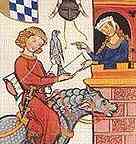 In the 12th and 13th centuries, Génolhac was a co-lordship and the first families were Anduze and Randon. Later came the Polignac, Budos, Conti, and Roche families. In this region, families like Polignac, Budos, Conti, and Roche played important roles, particularly in the context of local history, often linked to resistance and struggles during the religious wars. The Polignac, for example, are often associated with prominent figures of the nobility, and their influence extended to different regions. The Budos may also have local roots, possibly playing a role in land and community management. As for the Conti family, they have connections to periods of French nobility intertwined with local culture. The Roche family, for their part, probably played a role in everyday life and local affairs, although they are less known than the others.
In the 12th and 13th centuries, Génolhac was a co-lordship and the first families were Anduze and Randon. Later came the Polignac, Budos, Conti, and Roche families. In this region, families like Polignac, Budos, Conti, and Roche played important roles, particularly in the context of local history, often linked to resistance and struggles during the religious wars. The Polignac, for example, are often associated with prominent figures of the nobility, and their influence extended to different regions. The Budos may also have local roots, possibly playing a role in land and community management. As for the Conti family, they have connections to periods of French nobility intertwined with local culture. The Roche family, for their part, probably played a role in everyday life and local affairs, although they are less known than the others.
The ecclesiastical lord is the Bishop of Uzès. The bishop had not only ecclesiastical responsibilities but also a certain temporal power. As an ecclesiastical lord, he had lands and lordship rights over the region. This meant that he was involved in the political and social affairs of his community, often in competition with secular lords.
The Bishop of Uzès could have played a role in crucial events, such as the religious wars in the 16th century, where tensions between Catholics and Protestants were at their peak. Some bishops attempted to maintain peace and unity in the region, while others, like most members of the clergy at the time, were deeply rooted in their beliefs. He is truly a figure that represents the mix of faith and power.
 The Albigensian Crusade (1209-1218). It led to profound changes in these old feudal lands as the first lords took the side of the Counts of Toulouse, with the annexation of Languedoc by Saint Louis in 1226. The Albigensian Crusade aimed to eliminate Catharism, a religious movement considered heretical by the Catholic Church. The Cathars advocated a spirituality very different from that of the Roman Church, and their influence had spread in Languedoc, including regions like Génolhac.
The Albigensian Crusade (1209-1218). It led to profound changes in these old feudal lands as the first lords took the side of the Counts of Toulouse, with the annexation of Languedoc by Saint Louis in 1226. The Albigensian Crusade aimed to eliminate Catharism, a religious movement considered heretical by the Catholic Church. The Cathars advocated a spirituality very different from that of the Roman Church, and their influence had spread in Languedoc, including regions like Génolhac.
Openly hostile to the Catholic doctrine, the Cathars attracted many followers, which worried the Church and the nobility. The Crusade was launched under the pretext of restoring the Christian order, but it quickly turned into a brutal and bloody war. The military campaigns led by Simon de Montfort and other lords were marked by sieges, destruction of towns, and massacres of populations, including innocents.
Génolhac, located in the Cévennes, was close to conflict zones. The inhabitants were probably caught up in the turmoil, forced to choose their allegiance between the Catholic power and the Cathar beliefs. This climate of violence and suspicion had repercussions on local society for generations.
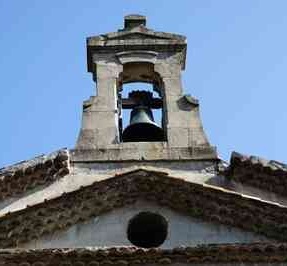 The Dominicans then settled in Génolhac. The Dominicans, or Preacher Brothers, are a religious order founded in the 13th century by Saint Dominic. Their mission was to preach the Gospel and combat heresies, especially during a time of strong religious tensions.
The Dominicans then settled in Génolhac. The Dominicans, or Preacher Brothers, are a religious order founded in the 13th century by Saint Dominic. Their mission was to preach the Gospel and combat heresies, especially during a time of strong religious tensions.
In Génolhac, they probably found fertile ground for their mission, notably due to the varied beliefs that existed in the Cévennes. The Dominicans were renowned for their communal life and teaching, which led them to settle in different regions to influence the faith of the people. Their presence in Génolhac could have meant a particular dynamic between the inhabitants, the Church, and local traditions. They may have played a role in education, but also in religious conflicts, particularly during the Reformation and the religious wars.
The Randon, already allied with Anduze, succeed them. The Randon, like many old noble families, had a significant influence on local life, especially at a time when the relationships between lords and peasants were crucial. In Génolhac, they played a role in agriculture, land management, and even in religious affairs, given the rural and sometimes tumultuous historical context. They also participated in power struggles during various periods of turmoil, such as the religious wars or economic crises. The Randon are also linked to the local culture by supporting artisans, schools, or charitable works. Each member of the family, with their own choices and actions, contributed to weaving the social fabric of the community.
The first charter. On May 12, 1228, Génolhac received its charter from Lord Bernard d'Anduze, nephew of Raymond VII, Count of Toulouse, confirmed and completed on March 30, 1234. The first lords seemed to have had much sympathy for the Occitan Catharism, more for political than for conviction. It was during this time that the castles of Montclar and Verfeuil were destroyed. This charter, like many of those at the time, was an act of foundation or confirmation of rights and privileges granted to a local community or a church. The lords often committed to protecting the rights of peasants, ensuring justice in their domains, and supporting the spiritual life of the inhabitants.
In the context of the crusade against the Albigensians and the religious tensions that prevailed at the time, Bernard's charter included clauses on protection against abuses by the Church or rival nobles, emphasizing its role as a defender of the inhabitants.
The charters were a reflection of power relations and struggles for community survival, and Bernard d'Anduze's charter played an important role in establishing the rights of the community of Génolhac.
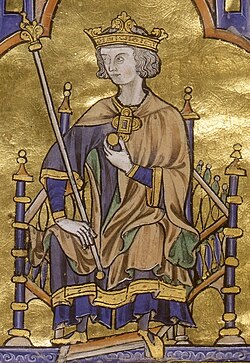 In 1271, King Louis IX crossed the region through Concoules, Génolhac, and Portes, heading to Aigues-Mortes for the crusade where he was to find his death under the walls of Tunis. Christianity was spread in the region by Saint Martial (in the 3rd century) and other monks and missionaries since its origins. The church in Génolhac is under the patronage of Saint Peter, the one in Portes as well, later under Saint Gilles. The feudal lords took a major part in the Crusades, especially the old family of Hérail de Brésis. The Hérail de Brésis family is a lineage that has been tied to the Cévennes region, particularly in the Gard department. This family has often been associated with the local nobility and played a role in the socio-economic history of the region.
In 1271, King Louis IX crossed the region through Concoules, Génolhac, and Portes, heading to Aigues-Mortes for the crusade where he was to find his death under the walls of Tunis. Christianity was spread in the region by Saint Martial (in the 3rd century) and other monks and missionaries since its origins. The church in Génolhac is under the patronage of Saint Peter, the one in Portes as well, later under Saint Gilles. The feudal lords took a major part in the Crusades, especially the old family of Hérail de Brésis. The Hérail de Brésis family is a lineage that has been tied to the Cévennes region, particularly in the Gard department. This family has often been associated with the local nobility and played a role in the socio-economic history of the region.
The name Hérail is sometimes mentioned in historical documents, notably as landowners and local lords. Members of this family may have been involved in local affairs, forming strategic alliances with other noble families and in the management of lands and resources.
In 1300, the Dominican convent was founded, which was confirmed in 1303 by Benedict XI and then Clement V. The Dominican convent in Génolhac is an important chapter in the religious history of the region. The Dominicans, known for their commitment to teaching and preaching, founded convents throughout France, including in rural areas like Génolhac, starting from the 13th century.
This convent likely served as a spiritual and social center for the inhabitants of the region, offering not only a place of worship but also a framework for education and training. The Preacher Brothers, as they are called, were active in spreading the Catholic faith and in the fight against heresies, notably Catharism, which was very present in Languedoc.
 Revolution and contemporary period in Génolhac. On December 21, 1788, the preliminary meeting of the village consuls took place. On March 11, 1789, the drafting of the register of grievances was carried out by Messrs. Bondurand Laroche and Lafont d'Aiguebelle. The notable people and the priest Bouziges participated. On July 14, 1789, Mr. de Roche, the lord of the place, became Captain of the company of 60 men from Génolhac. He gifted the first tricolor flag to the Municipality. On July 14, 1790, it was the Festival of the Federation. In the parish church, priest Bouziges blessed the tricolor flag presented by Captain François de Roche. On August 24, 1790, the civil constitution of the clergy caused reservations among them, who fled en masse to the camp at Jalès in Ardèche. Priest Bouziges hid at Tourévès with the Protestant Fabre and at Finoune with the Veyras. He was not disturbed. The Tree of Liberty will be planted in Colombier Square on July 22, 1792.
Revolution and contemporary period in Génolhac. On December 21, 1788, the preliminary meeting of the village consuls took place. On March 11, 1789, the drafting of the register of grievances was carried out by Messrs. Bondurand Laroche and Lafont d'Aiguebelle. The notable people and the priest Bouziges participated. On July 14, 1789, Mr. de Roche, the lord of the place, became Captain of the company of 60 men from Génolhac. He gifted the first tricolor flag to the Municipality. On July 14, 1790, it was the Festival of the Federation. In the parish church, priest Bouziges blessed the tricolor flag presented by Captain François de Roche. On August 24, 1790, the civil constitution of the clergy caused reservations among them, who fled en masse to the camp at Jalès in Ardèche. Priest Bouziges hid at Tourévès with the Protestant Fabre and at Finoune with the Veyras. He was not disturbed. The Tree of Liberty will be planted in Colombier Square on July 22, 1792.
On 12 Vendémiaire, An IV (October 4, 1795), terrible floods caused 4 deaths in Génolhac and at Pont de Rastel. Population census in 1797: Génolhac has 1380 inhabitants, Concoules 899, Chamborigaud 695, Hiverne 492, Ponteils 306, Portes 1351, Bonnevaux 717, Malons 543 and Aujac 492. On May 16, 1824, the gate of the Chef de Ville was demolished, and in 1830, the houses on Grand Rue will start to be realigned. From 1834 to 1842, the construction of national road 106 Nîmes-Moulins (now CD 906) took place.
In 1839, new floods ravaged Pont de Rastel. In 1842, the school of Pont de Rastel was built, and the Temple in 1844. On March 10, 1861, the construction of the railway from Brioude to Alais was announced but the station in Génolhac was not planned. The decision for its construction was made on April 10, 1864. The viaduct of Chamborigaud was completed in 1867. The tannery (Ausset-Hermet) was established in 1888. This date can be seen on the chimney. In April 1889, a mining disaster occurred in La Vernarède. The first project for a school group with four classes emerged in 1894. In 1914, the declaration of war was announced during the festive season. Génolhac would lose 39 of its sons. Between 1929-1931, the supplementary course (junior high school) was introduced.
The war from 1939-1945 saw the deaths of 5 people from Génolhac. The Resistance had two maquis in the region: one in Sénéchas and one in Bouzèdes. Génolhac has four martyrs: Jean-François Pelet killed in the Vosges, Aimé Crégut killed at the well of Celas (near Alès), Georges Leyton executed by the Germans, and Robert Brun shot on June 5, 1944, in front of the Mont Lozère hotel. The Liberation saw the passage of the 5th DB on August 30 and 31, 1944. In 1950, water and sewage networks were installed. The inauguration of the new college took place in 1961. The tannery disappeared in 1964. From 1978 to 1980, the facades of two houses on Grand Rue were renovated, and remains from the late Middle Ages were discovered.
Former holiday hotel with a garden along the Allier, L'Etoile Guest House is located in La Bastide-Puylaurent between Lozere, Ardeche, and the Cevennes in the mountains of Southern France. At the crossroads of GR®7, GR®70 Stevenson Path, GR®72, GR®700 Regordane Way, GR®470 Allier River springs and gorges, GRP® Cevenol, Ardechoise Mountains, Margeride. Numerous loop trails for hiking and one-day biking excursions. Ideal for a relaxing and hiking getaway.
Copyright©etoile.fr